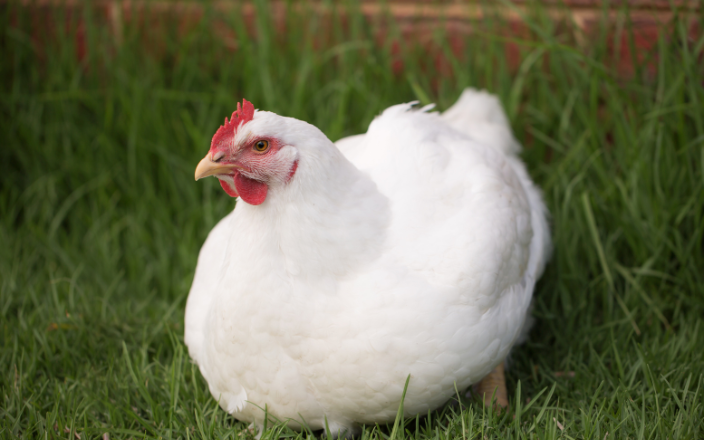Content available at: Philipino
Optimizing Fat Incorporation in Broiler Feed
A Cost-Effective and Nutritional Perspective
Introduction
Fat is an essential component in broiler feed, serving as a highly concentrated energy source and playing a crucial role in growth performance, feed efficiency, and meat quality. Selecting the right fat source is critical to balancing cost-effectiveness, energy value, and essential fatty acid (EFA) requirements.
In this article, we will compare Beef Tallow, Soya Crude Oil, and Rice Bran Crude Oil as fat sources in broiler diets, analyze their cost and nutritional value, and discuss the importance of linoleic acid. Additionally, we will examine the impact of fat color (dark vs. light crude oils) and other essential factors in fat incorporation.
Why Is Fat Required in Broiler Feed?
Fat is added to broiler feed for several key reasons:
- High Energy Density – Fat provides 2.25 times more energy than carbohydrates, making it an efficient energy source.
- Improved Feed Conversion Ratio (FCR) – Fats help birds convert feed into body mass more efficiently, reducing production costs.
- Enhanced Palatability – The inclusion of fats improves feed texture and reduces dustiness, increasing feed intake.
- Essential Fatty Acids (EFA) Requirement – Linoleic acid (C18:2) is a critical EFA that promotes growth, immunity, and skin quality in broilers.
- Better Pellet Quality – Fat improves pellet binding, reducing feed wastage.
- Thermal Regulation – Dietary fat generates less metabolic heat compared to carbohydrates, which is beneficial in hot climates.
Commonly Used Fat Sources in Broiler Feed
Fat sources can be broadly classified into:
- Animal-Based Fats
- Beef Tallow – A highly stable fat source, rich in saturated fats but low in essential fatty acids.
- Poultry Fat – Contains balanced fatty acids but is prone to oxidation if not stored properly.
- Fish Oil – High in omega-3 fatty acids but expensive and may cause fishy odors in meat.
- Vegetable Oils
- Soya Crude Oil – Rich in linoleic acid (~50%), making it ideal for EFA requirements. However, it is expensive.
- Rice Bran Crude Oil – A moderately priced oil with ~35% linoleic acid. It contains unsaponifiable matter, which may slightly reduce energy efficiency.
- Palm Oil – A cost-effective alternative with moderate energy content but lower digestibility.
- Sunflower Oil – High in linoleic acid (~60%) but costly.
Comparison of Beef Tallow, Soya Crude Oil, and Rice Bran Crude Oil
A direct comparison of these fat sources helps in selecting the most economical and nutritionally beneficial option.
Cost-effectiveness:
- Beef Tallow is the most cost-effective fat source but requires linoleic acid supplementation.
- Soya Crude Oil provides the highest linoleic acid but is the most expensive.
- Rice Bran Crude Oil is a balanced choice between cost and linoleic acid content.
Cost Per Unit of Energy (Metabolizable Energy – ME)
- The economic feasibility of a fat source is determined by its cost per 1,000 kcal of energy.
- ✅ Beef Tallow is the most cost-effective energy source.
- ✅ A blend of tallow and vegetable oils can optimize both cost and nutrition.
Optimized Fat Blend for Cost and Nutrition
A blend of 40% Rice Bran Oil, 40% Tallow, and 20% Soya Oil ensures:
- Balanced linoleic acid (~24.8%)
- Improved digestibility
- Lower feed cost
Dark vs. Light-Colored Crude Oils: What’s the Difference?
- Processing & Quality
- Light-Colored Crude Oil: Higher purity, better filtration, lower free fatty acid (FFA) content.
- Dark-Colored Crude Oil: Often contains more unsaponifiable matter and impurities, reducing digestibility.
- Oxidation & Storage
- Dark oils oxidize faster, leading to rancidity and reduced feed quality.
- Light-colored oils are more stable, especially with added antioxidants.
- ✅ For broiler feed, lighter crude oils are preferable to avoid digestive issues and oxidation losses.
Final Recommendations
- Cost-Effective Choice – A 50:50 mix of Beef Tallow & Rice Bran Oil can reduce feed costs while maintaining energy efficiency.
- Nutritionally Balanced Formula – A blend of 40% Rice Bran Oil, 40% Tallow, and 20% Soya Oil meets linoleic acid requirements.
- Storage Precautions – Use antioxidants like BHT or Vitamin E to prevent oxidation in unsaturated fats.
- Avoid Excessive Dark Oils – Opt for lighter-colored oils to maintain feed digestibility.
Conclusion
Selecting the right fat source is a balance between cost and nutrition. While beef tallow provides the best energy cost savings, incorporating vegetable oils ensures essential fatty acid needs are met. With careful formulation, broiler performance can be optimized while keeping feed costs under control.
*Price of the Fat materials is based on current market rate INR in India.

